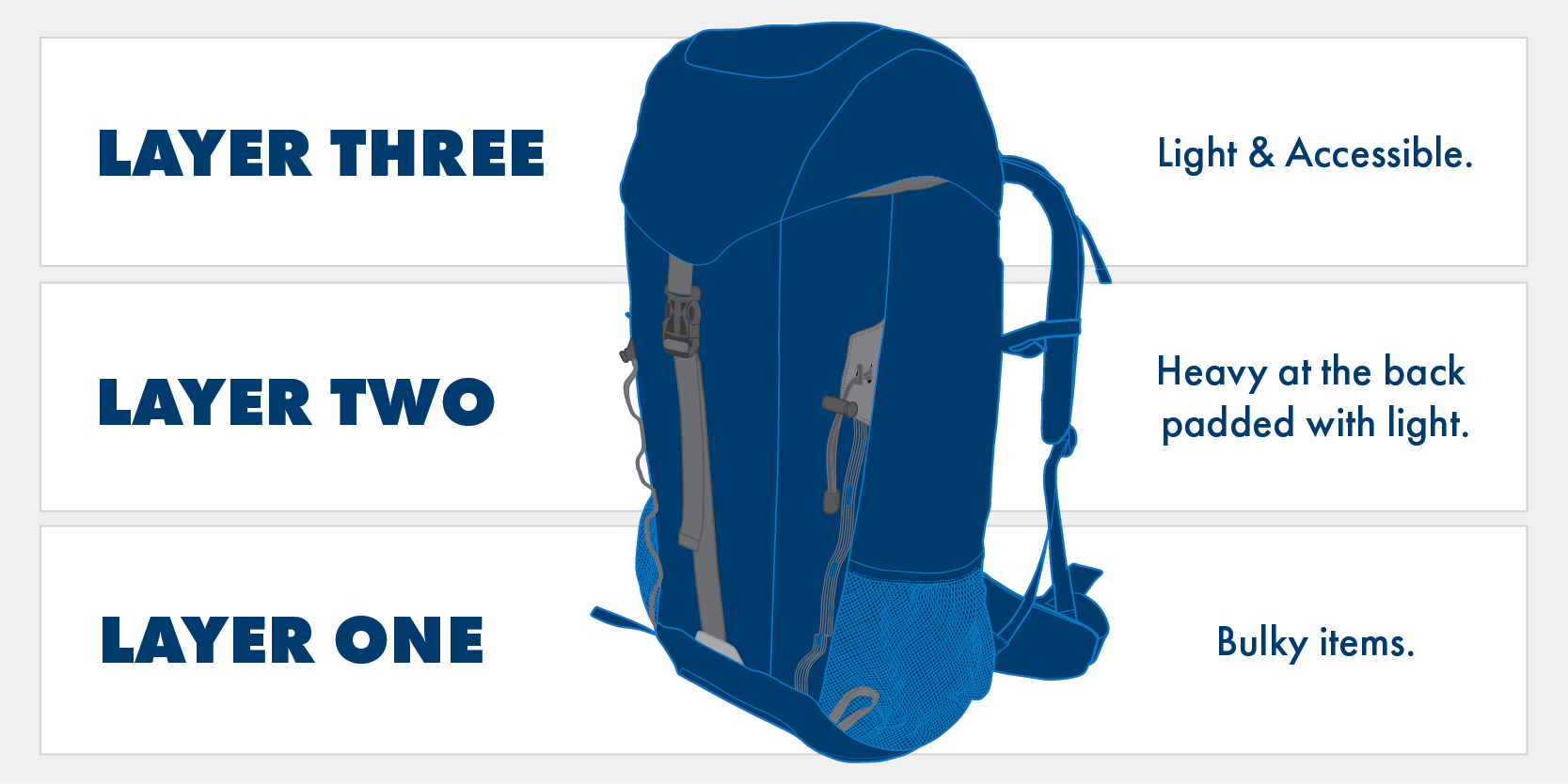At BCF, we have a range of daypacks and hiking backpacks that carry up to 80L, offering plenty of room to store your goods while you explore the great outdoors. The struggle, however, is in packing your sleeping bag or mat, clothes, food, portable stove and other hiking gear neatly and evenly throughout the pack. You'll likely be carrying the pack for hours on end, trekking around with it for days or even weeks at a time, making it paramount that you load it safely, balancing weight, comfort and convenience.
Whether you're taking your first overnight hike or you're looking for some tips on organisation, our BCF'ing experts have a few pointers that'll help you fit all your hiking essentials into your pack.
How to Pack a Hiking Pack

-
Waterproofing
Before you start packing all your gear into your bag, you’ll want to ensure it’s waterproof. There are two recommended ways to waterproof your hiking pack: with a pack liner or a pack cover. Liners are lightweight internal bags that protect your equipment from water even to the point of submersion. A pack cover is another lightweight option that goes over the outside of your hiking bag and is often used in conjunction with a liner for extra precaution.
-
Layer One - Bottom of the Pack
When you have a pack with only one point of entry into the main compartment, it’s best to put your bulky items that you won’t need before making camp at the bottom. This includes camping equipment such as a sleeping bag or mat. Around this, you should store your clothes, remembering to keep a jacket out to put on the top layer should the weather be cooler. These soft items at the base of your backpack also help to create a type of shock-absorption.
-
Layer Two - Middle of the Pack
On top of the sleeping bag and clothes is a great place for your hiking stove and any fuel or gas cannisters that go along with it. These items should be placed against your back to help stable your centre of gravity and directs the load downward rather than if it was placed toward the outside of the pack which would direct it backwards. If you’re carrying liquid fuel, ensure the cap is tightly shut and that you place it upright. In front of your stove is the best place to store food.
The back of your pack is also where you should store your hydration pack or hydro bladder assuming it does not have its own pocket or sleeve separate to the main compartment. -
Layer Three - Top of the Pack
All your essentials, items that you’ll need frequent or easy access to, and convenience products should sit at the top of your pack. This includes a rain jacket or insulated jacket, first aid kit, toilet supplies.
-
Outside Layer - Side Pockets
Most hiking packs will come with small pockets on the side which are great for storing knives, water bottles and purifying tablets, maps, a compass, a PLB, sunscreen, bug spray and a headlamp.
-
Outside Layer - Attachment Loops & Straps
Many packs also feature tool loops and fasteners for items such as your tent, hiking poles and a trowel.
Hoisting your Loaded Pack
When your hiking pack is fully loaded, it’s no doubt going to weigh quite a few kilos. Picking this pack up so that you don’t hurt your back or prematurely wear out the shoulder straps is an equally important step in the process. Instead of grabbing the hiking pack by the shoulder straps and slinging it onto your back, you should opt instead to tilt the pack into an upright position, have your legs shoulder width apart with knees bent, and grab the haul loop (the handle at the top of the pack). While still holding this loop, slide the pack up your leg to rest on your hip or thigh as you slip your other arm through the shoulder strap as you lean forward to cradle the pack on your back. Let go of the loop and slip that arm into the other shoulder strap while still leaning forward. Buckle the waist belt and adjust the fit before standing upright.
With a few practices and squishing the soft items around your solid, bulkier items (that will also stop them from shifting), you’ll soon find a way to fit everything within your hiking pack. If not, it might time to upgrade to a larger pack.

